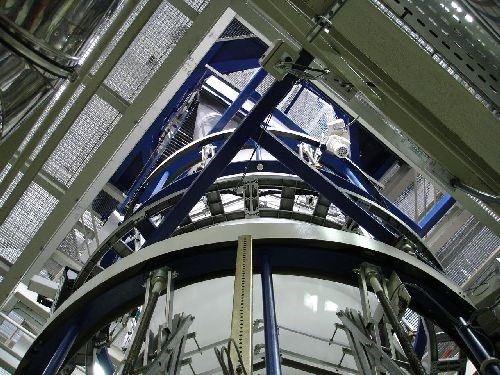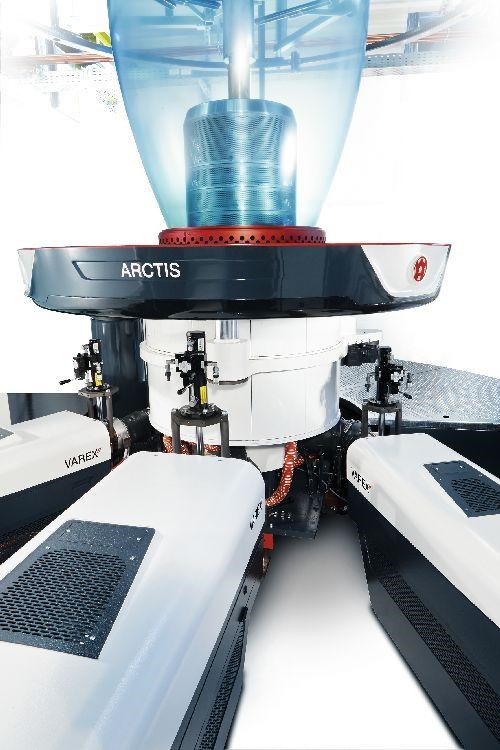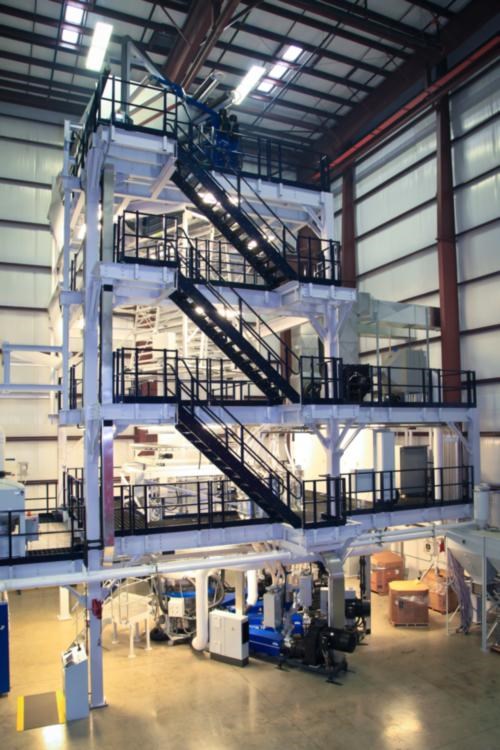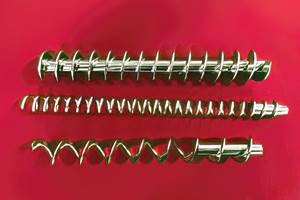Lots of Expansion Brewing In Film Extrusion
Firms adds more capacity to produce higher-tech films.

There’s been a spate of expansion news in film extrusion, as processors are reporting new installations at breakneck speed.
Most recently, Next Generation Films, Lexington, Ohio, announced that it has ordered three blown film lines from Windmoeller & Hoelscher, Lincoln, R.I., to bolster its capacity for its core 大象传媒 and build up its presence in the barrier film market.
Next entered the barrier film market in mid-2012 and has ordered two Varex II lines, one 87-in., 7-layer line and one 103-in. , 9-layer line, to cultivate this segment of their 大象传媒. Notes Dave Frecka, founder & CEO at Next, “We want to solidify our position as a key player on the growing barrier market and are investing in the technology we need to do so.”
Varex II was introduced at the K 2013 in Düsseldorf as the successor to the well-known Varex line. W&H engineers spent roughly three years reviewing each component of the existing range, making both small and large changes to improve output, safety and efficiency.

The third line ordered, a 126-in. 5-layer Varex, will be installed this spring and used to support the company's core 大象传媒.
Meantime, , a specialty films producer based in Louisville, Ken., has expanded its film production capacity with the addition of a new five-layer blown film line from Reifenhauser Inc., Wichita. Kan. The company recently installed and commissioned the new line (see photo bottom) in an all-new 30,000 ft² addition that it built specifically for that purpose at its Louisville headquarters.
The new film line started running in November. It will be used to produce five-layer film structures that will provide a better alternative than 3-layer structures, according to Brian Krein, Chairman and CEO of BJK. The 110-in. wide line is equipped with with a 550-mm die and is capable of running more than 1,500 lb/hour of material. “It’s our feeling that 3-layer’s future for many film segments will move to 5-layer,” Krein noted. “5-layer films allow more flexibility in general to extrude for specific applications.” These sentiments are consistent with those expressed by ExxonMobil in meetings with Plastics Technology at last year’s K 2013 show.
Leading U.S. stretch film producer , meanwhile. recently installed two stretch film lines from Gloucester Engineering, Gloucester, Mass. including a 5-layer cast stretch film line to the company’s facility in Shelbyville, Ken., and a 5-layer blown stretch film line (see photo above) in Belleville, Ontario. The cast film line has been in production since October 2013 and the blown film line will be in production early this year.
The 9-up cast stretch film line includes four Contracool extruders equipped with PIB injection that feed a Cloeren feed block and auto die. Also included is a casting unit with temperature control unit (TCU) and a 1002-DS Surface-Center winder with dual overlapping single turrets. The line is enhanced with resin vacuum loading, loss-in-weight blending, gauging, profile control and a trim reprocessing system all controlled by the Extrol 6032 control system.
The five-layer blown stretch silage film line includes five Contracool extruders equipped with PIB injection feeding a low profile five-layer IBC die and air ring. Also included are a bubble cage, Traversanip oscillating primary nip roll with composite roller collapsing frame, secondary nip roll, and a dual turret 1002-D Surface-Center winder. The line is enhanced with resin vacuum loading, feed throat gravimetric blending, and a trim reprocessing system all controlled by the Extrol 6032 control system, and containerized controls.

Related Content
What to Know About Your Materials When Choosing a Feeder
Feeder performance is crucial to operating extrusion and compounding lines. And consistent, reliable feeding depends in large part on selecting a feeder compatible with the materials and additives you intend to process. Follow these tips to analyze your feeder requirements.
Read MoreHow to Select the Right Cooling Stack for Sheet
First, remember there is no universal cooling-roll stack. And be sure to take into account the specific heat of the polymer you are processing.
Read MoreShredding Thin Film: How to Do It Right
While many processors recoil at this task, a little know-how in shredding equipment, processing, and maintenance should add the necessary confidence.
Read MoreHow To Identify Resin Degradation in Single-Screw Extruders
Degradation can occur in many single-screw extrusion operations, and typically occurs due to minor design flaws in the screw. Here is how to track it down.
Read MoreRead Next
Making the Circular Economy a Reality
Driven by brand owner demands and new worldwide legislation, the entire supply chain is working toward the shift to circularity, with some evidence the circular economy has already begun.
Read MoreFor PLASTICS' CEO Seaholm, NPE to Shine Light on Sustainability Successes
With advocacy, communication and sustainability as three main pillars, Seaholm leads a trade association to NPE that ‘is more active today than we have ever been.’
Read More













